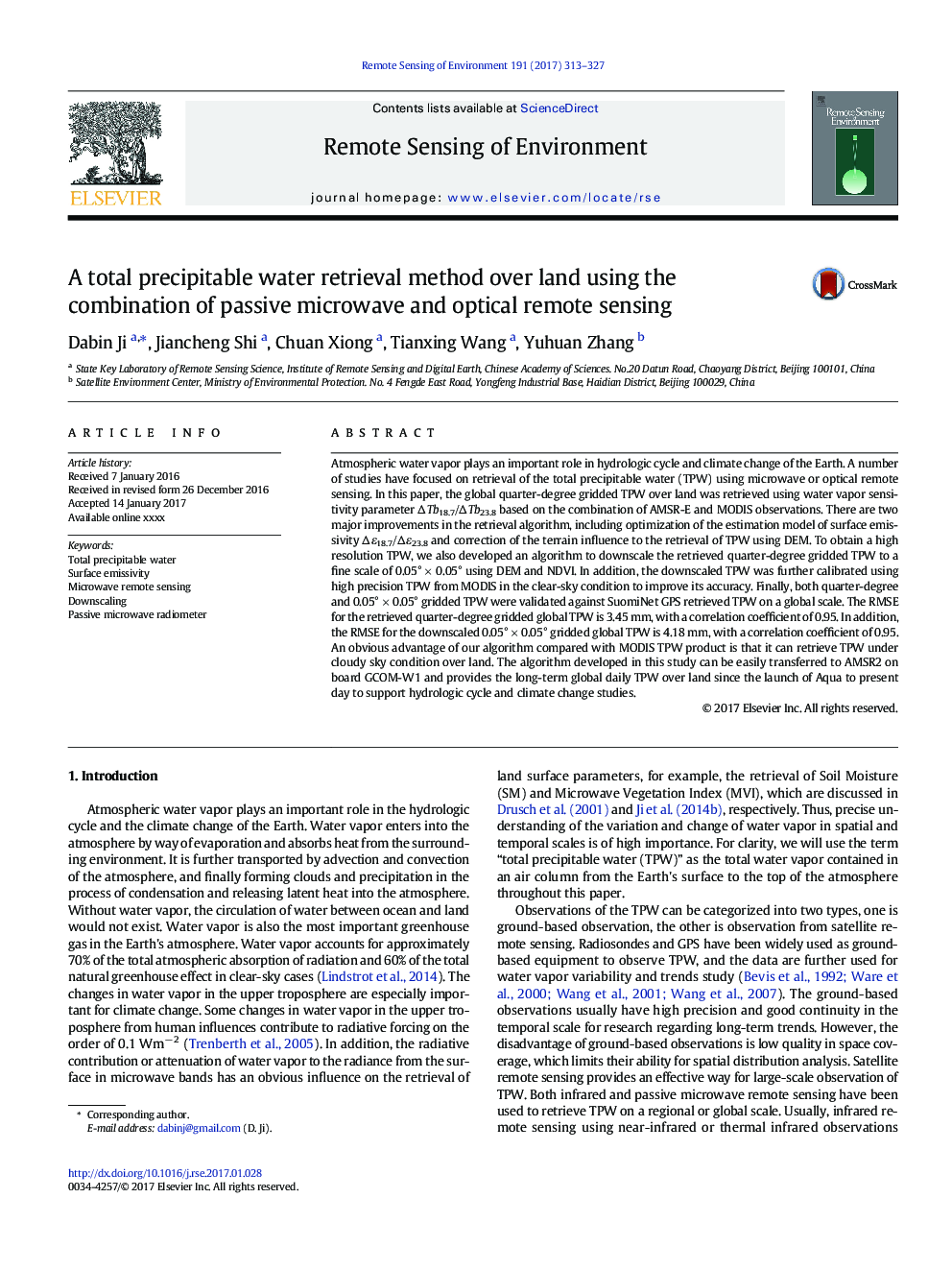| Article ID | Journal | Published Year | Pages | File Type |
|---|---|---|---|---|
| 5755044 | Remote Sensing of Environment | 2017 | 15 Pages |
Abstract
Atmospheric water vapor plays an important role in hydrologic cycle and climate change of the Earth. A number of studies have focused on retrieval of the total precipitable water (TPW) using microwave or optical remote sensing. In this paper, the global quarter-degree gridded TPW over land was retrieved using water vapor sensitivity parameter â Tb18.7/â Tb23.8 based on the combination of AMSR-E and MODIS observations. There are two major improvements in the retrieval algorithm, including optimization of the estimation model of surface emissivity â ε18.7/â ε23.8 and correction of the terrain influence to the retrieval of TPW using DEM. To obtain a high resolution TPW, we also developed an algorithm to downscale the retrieved quarter-degree gridded TPW to a fine scale of 0.05° Ã 0.05° using DEM and NDVI. In addition, the downscaled TPW was further calibrated using high precision TPW from MODIS in the clear-sky condition to improve its accuracy. Finally, both quarter-degree and 0.05° Ã 0.05° gridded TPW were validated against SuomiNet GPS retrieved TPW on a global scale. The RMSE for the retrieved quarter-degree gridded global TPW is 3.45 mm, with a correlation coefficient of 0.95. In addition, the RMSE for the downscaled 0.05° Ã 0.05° gridded global TPW is 4.18 mm, with a correlation coefficient of 0.95. An obvious advantage of our algorithm compared with MODIS TPW product is that it can retrieve TPW under cloudy sky condition over land. The algorithm developed in this study can be easily transferred to AMSR2 on board GCOM-W1 and provides the long-term global daily TPW over land since the launch of Aqua to present day to support hydrologic cycle and climate change studies.
Related Topics
Physical Sciences and Engineering
Earth and Planetary Sciences
Computers in Earth Sciences
Authors
Dabin Ji, Jiancheng Shi, Chuan Xiong, Tianxing Wang, Yuhuan Zhang,
